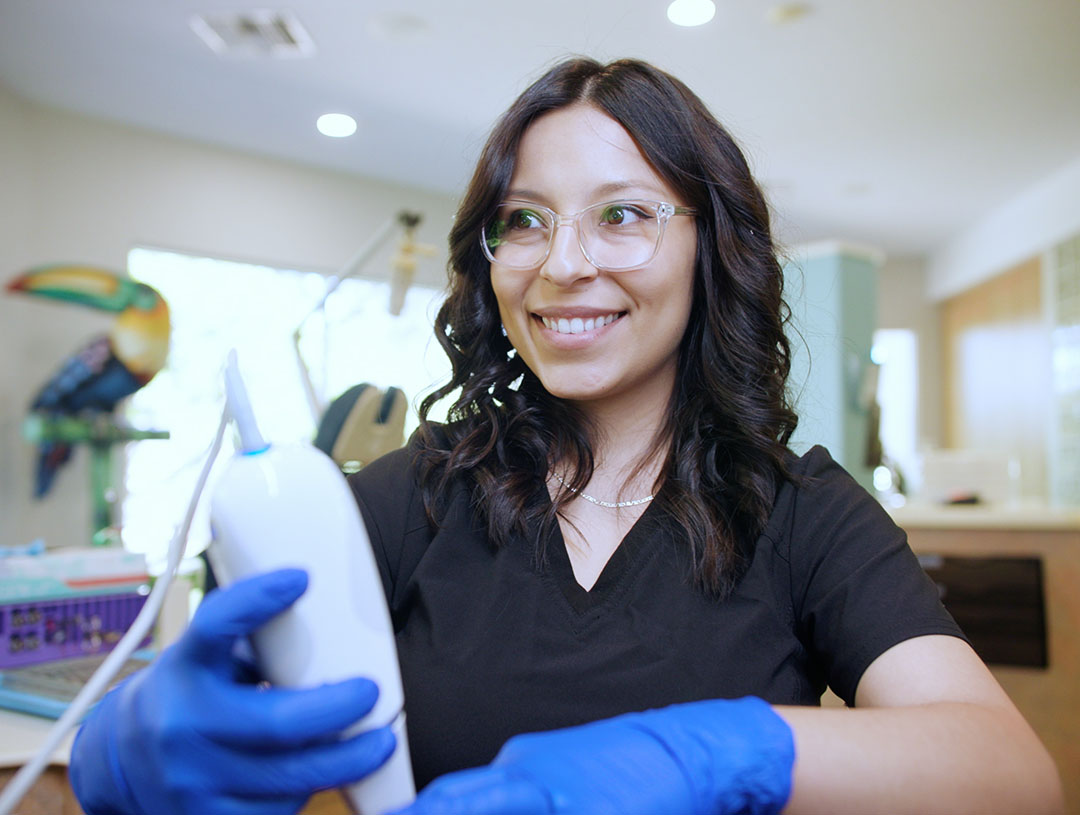5 Common Smile Issues Clear Aligners Can Fix

Thinking about straightening your teeth but not thrilled about wearing metal braces? You’re not alone. Many people, teens and adults alike, are turning to clear aligner treatment as a discreet, effective alternative to braces. Whether you’re dealing with bite problems or crowding, clear aligners from our DeLand, FL, orthodontist can handle more than you might think.
If you’re wondering whether your dental needs will make you a candidate for clear aligners, here are 5 smile issues that are commonly treated using this method.
1. Crowded Teeth
Crowding happens when there isn’t enough room in your mouth for your teeth to sit properly, causing them to overlap, twist, or push against each other. It can make brushing and flossing harder, which raises your risk for cavities and gum disease. Thankfully, straightening teeth with clear aligners can address mild to moderate crowding with impressive precision.
Getting clear aligners for crowded teeth involves wearing a series of trays that gradually move your teeth into better alignment. Because they’re removable, it’s easier to maintain good hygiene throughout your orthodontic treatment. Patients often see noticeable improvement in just a few months when trays are worn consistently, 20-22 hours a day.
2. Overbite
An overbite is when the upper front teeth extend too far over the lower front teeth. While some overbite is natural, a more severe one can lead to uneven tooth wear, jaw discomfort, or even speech issues.
Clear aligners for adults and teens can be used to reduce the degree of overbite in many cases. Through gentle, consistent pressure, clear aligner therapy shifts the upper and lower teeth into a more balanced position. If the overbite is significant, seeing an orthodontist like ours is key as we’ll determine when it’s smart to choose clear aligners or still go with braces.
3. Underbite
An underbite occurs when the lower teeth extend past the upper teeth. This can interfere with chewing, cause jaw stress, and lead to uneven enamel wear over time. While severe underbites might require surgery or traditional braces, mild to moderate cases can be improved with dental aligners.
Custom clear aligner trays can help guide the lower teeth back into a more natural position while gently shifting the upper teeth forward. The goal is a more functional, comfortable bite without the need for bulky hardware.
4. Crossbite
A crossbite happens when some upper teeth sit inside the lower teeth when you bite down. This can affect just one tooth or several and may occur in the front, back, or both. Left untreated, crossbites can lead to chipped teeth, receding gums, and jaw pain.
Using clear aligners to correct a crossbite is becoming increasingly common as more patients realize that they qualify for treatment and understand how this option can help. Our local orthodontist can examine your smile during a clear aligners consultation and will use information gained to help map out a plan customized to your bite pattern.
5. Open Bite
If your upper and lower teeth don’t touch when your mouth is closed, that’s called an open bite. It can affect speech, chewing, and cause extra wear on back teeth. Often caused by habits like thumb-sucking or tongue thrusting during development, open bites can persist into adulthood if untreated.
Clear aligners can address open bites by gradually closing the vertical gap between the teeth. This is done with precision-mapped trays that shift the bite into a more functional position. Just keep in mind: severe open bites may still be better managed with traditional methods.
Schedule a Consultation Today
After properly evaluating your bite and alignment, our orthodontist in DeLand, FL, will determine if clear aligners are best for you and what the next steps look like. Call DeLand Orthodontics today at (386) 736-9966 or book a free consultation online to learn more.
